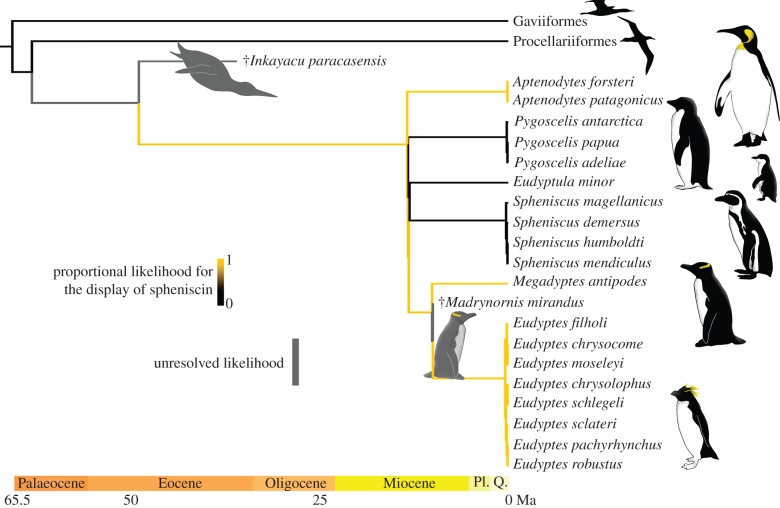Figure 1.
Emperor and king penguins (Aptenodytes spp.), crested penguins (Eudyptes spp.) and the yellow-eyed penguin (Megadyptes antipodes) are the only living animals known to display spheniscin pigments. If we consider losses and gains of spheniscin to be equally likely evolutionarily, then the most recent common ancestor shared by all living penguins did not have yellow feathers. Alternatively, if we consider a single evolution of spheniscin to be more likely than multiple appearances (i.e. an asymmetric model), then spheniscin probably evolved between 63 and 13 million years ago in an ancient penguin lineage. Both models suggest that the extinct penguin, Madrynornis mirandus, had a spheniscin-pigmented ancestor. Results have been interpreted from maximum-likelihood ancestral-state reconstructions performed in Mesquite v. 2.75 [22] (Mk1, equal rates model; Asymm. 2. param., asymmetric model); Mesquite output file in the electronic supplementary material. Figure shows results from asymmetric model. Not all gaviiform or procellariform taxa are shown. Sphenisciformes branch lengths are from [23,24], in units of geological time; Gaviiformes and Procellariiformes branch lengths are from [25] and have been scaled to geological time. The relationship between Gaviiformes, Procellariiformes and Sphenisciformes follows [26] as adapted by [25]. Inkayacu paracasensis included to represent stem-lineage penguins, silhouette from [27]. Pl., Pliocene; Q., Quaternary. (Online version in colour.)

